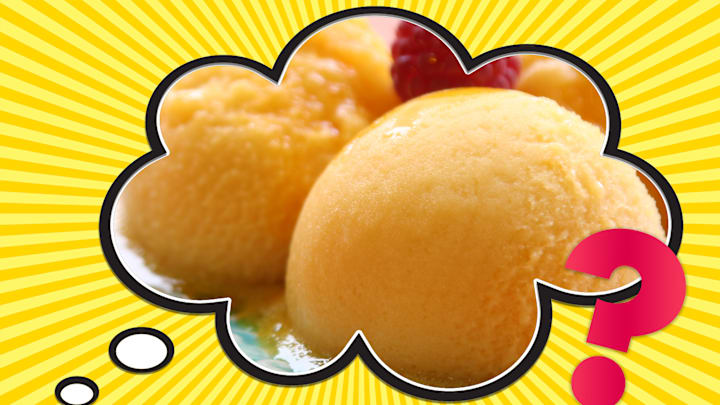Fruit, ice, and sugar. Only three ingredients make up the delicious frozen treat known as Italian ice, which has been popularized nationwide by chains like Rita’s Ice, Jeremiah’s Italian Ice, and Uncle Louie G.
It’s often considered the perfect summery snack, but the name doesn’t exactly shed much light on what it really is. So, where does Italian ice really come from, and how does it compare to other ice-cold desserts available to us?
- Italian Ice vs. Sherbet vs. Granitas vs. Snowcones vs. Shaved Ice: What’s the Difference?
- Does Italian Ice Come From Italy?
- The Italian Origins of Frozen Treats
Italian Ice vs. Sherbet vs. Granitas vs. Snowcones vs. Shaved Ice: What’s the Difference?
Italian ice—also called “water ice” in Philadelphia—is essentially a blended combination of ice, any type of fruit or flavoring (especially citrus), and sugar. The texture is usually smooth, although it is still clearly ice-like rather than creamy.
The lack of dairy in Italian ice makes it a great option for those who may be lactose intolerant. It also differentiates it from sherbet, which has the same blended base but with milk or cream added. And, of course, frozen yogurt, gelato, and regular ice cream are even heavier in dairy.
As frozen treats go, granitas, shaved ice, and snowcones all share similarities with Italian ice, but also have some major differences. Granitas, a Sicilian-based dessert, has the same ingredients as Italian ice but the ice crystals in it aren’t blended out as smoothly; they’re intact for a chunkier, more textured experience. Snowcones do the same thing but are topped with artificially flavored syrups instead of having fruit blended in. Lastly, shaved ice is like a snowcone with a texture more akin to Italian ice: smooth and soft, flaky ice.
All the little differences between these treats are enough to make your head spin. In the end, it might just be easiest to remember that Italian ice is mostly a variation of sorbet, but with a different density.
Does Italian Ice Come From Italy?
Italian ice’s origins have no actual connection to sorbet, however. And believe it or not, they’re not necessarily Italian. Instead, they’re solidly American.
Caterina DiCosmo, an Italian immigrant living in Elizabeth, New Jersey, is often credited with creating and popularizing the dessert, along with her husband, Giovanni. Channeling her memories of granitas in Italy, she used an ice cream maker to blend lemon juice, sugar, and water rather than the traditional method of scraping ice crystals.
This made what we now know as Italian ice. The shop the DiCosmos opened in 1915 to sell this new creation, DiCosmo’s Italian Ice, remains open today in Metuchen, New Jersey, and continues to be a family-run business managed by Caterina’s descendants.
The Italian Origins of Frozen Treats
Even though modern Italian ice didn’t actually come from Italy, Italians were likely some of the first to make frozen treats similar to those we still enjoy today.
Vice reported that food writer and historian Jeffrey Steingarten considers Mount Etna in Sicily as “the primeval origins of every ice and ice cream that came after.” This is because inhabitants on the island were known to harvest the snow off of the mountain’s peaks and mix it with fruits and/or honey to make icy snacks.
This early form of dessert was a popular choice for the wealthy in ancient Rome as well. Snow that had been collected from mountaintops was preserved in deep pits that were insulated with straw and other materials. From there, it was blended with similar sweeteners and enjoyed by the elite during celebrations and special occasions.
Luckily, no one has to climb to the tops of any mountains nowadays to prepare a batch of delicious Italian ice. If you want a taste of this fruity treat, you can simply pop by your local shop or, considering the ingredients are so simple, you could try preparing it yourself this summer.
Have you got a Big Question you'd like us to answer? If so, let us know by emailingbigquestions@mentalfloss.com.
Read More Big Questions:
